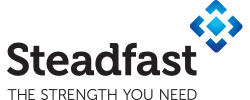Each year the Australian Taxation Office or ATO data matching program gathers data on a range of lifestyle assets to identify and address tax evasion. Therefore, the assets you insure under your business matter.
What is the ATO Data Matching Program?
The ATO data matching program allows the ATO to gather information from various sources to build a clearer picture of your declared wealth.
After launching in 2011, the ATO extended the program to include lifestyle assets in 2013. Now, by gathering data on lifestyle assets registered to your business, the ATO can see if your income reflects your lifestyle.
While you may think it’s easy to buy assets through your business or under a different name, it’s not. The ATO uses over 60 identity matching tools to pair assets to individuals, including using data from insurers.
Further, the ATO gathers information for around 300,000 people each financial year. As a result, ATO officers and data analysts can look for variations, such as under or over reporting of tax deductions.
While the primary purpose is to identify non-compliance, the program also allows the ATO to create products and educational tools that help you manage your tax duties.
What lifestyle assets are included in the ATO data matching program?
For the period 2021-2022 to 2022 to 2023 the ATO data matching program will obtain lifestyle asset data from insurance policies on the following assets:
| Asset Class | Minimum Asset Value Threshold |
| Marine vessels | $100,000 |
| Motor Vehicles including caravans | $65,000 |
| Thoroughbred horses | $65,000 |
| Fine art | $100,000 per item |
| Aircraft | $150,000 |

Lifestyle assets such as luxury cars are included in the ATO data matching program.
The types of data securely collected from insurers includes:
- Client identification details (names, addresses, phone numbers, dates of birth, Australian business number, email address)
- Policy details (policy number, policy inception date, start date of current policy, end date of current policy, total value insured, purchase price of the property insured, registration or identification number of the property, insurance category, policy cost, description of the property insured, primary use type).
What should I do if details for my assets are not up to date?
The purpose of the scheme is to encourage taxpayers to comply with business and personal tax obligations. Most importantly, the program aims to uphold the integrity of the tax system, so that we all feel it’s credible and fair.
The ATO collects data to pre-fill tax returns each year. Therefore, the ATO want you to correct data on your old and new tax returns. For example, you should make sure fringe benefits, business expense deductions or other business-related claims are accurate.
In similar fashion, it’s vital to draw a clear line between your business and personal assets for insurance purposes.
The ATO will always notify the public of the specific areas that are subject to scrutiny. Therefore, if you have made a reporting error, contact the ATO or your accountant to make corrections.
How can Clear Insurance help you?
We understand that running a business is time-consuming. Particularly, admin jobs. For example, when you’re busy letting insurers know about business asset and income changes often becomes low priority.
In fact, that’s where risk and insurance advisers, such as our Clear Advisers, are worth their weight in gold. When you appoint Clear Insurance we save you time by keeping insurers up to date on asset and income changes.
Most importantly, with our fee-for-service approach, you can feel confident we always act in your best business interests.
General Advice Warning: This advice is general and does not take into account your objectives, financial situation or needs. You should consider whether the advice is appropriate for you and your personal circumstances. Before you make any decision about whether to acquire a certain product, you should obtain and read the relevant product disclosure statement.
Clear Insurance Pty Ltd. ABN 41 601 916 689. AFSL No. 548953.





